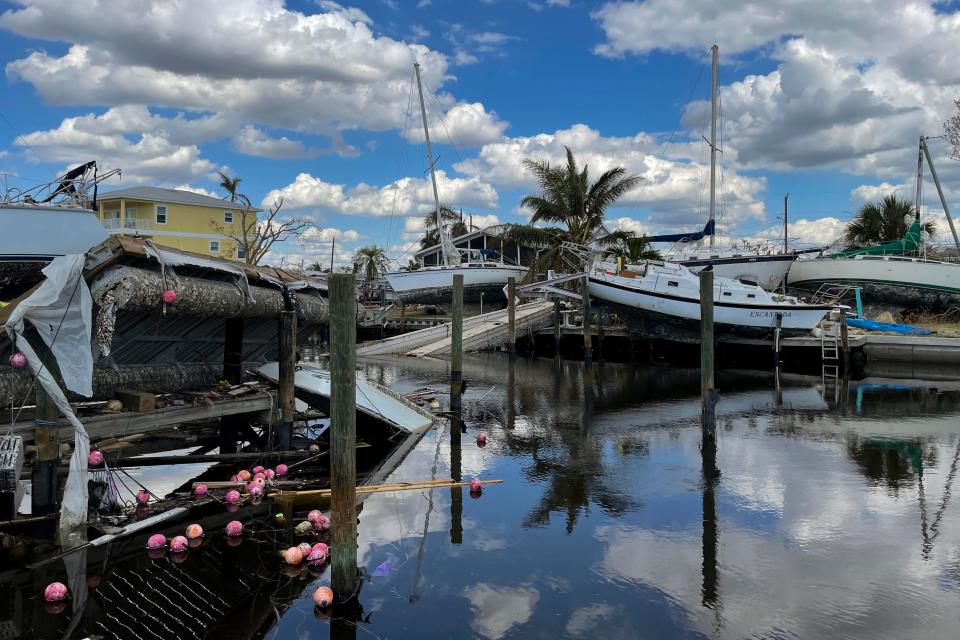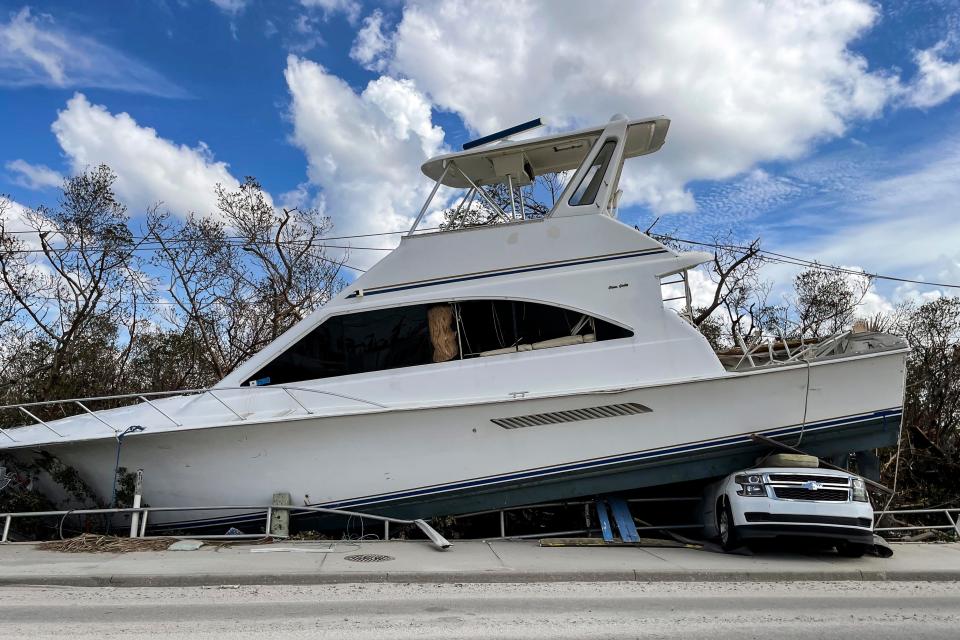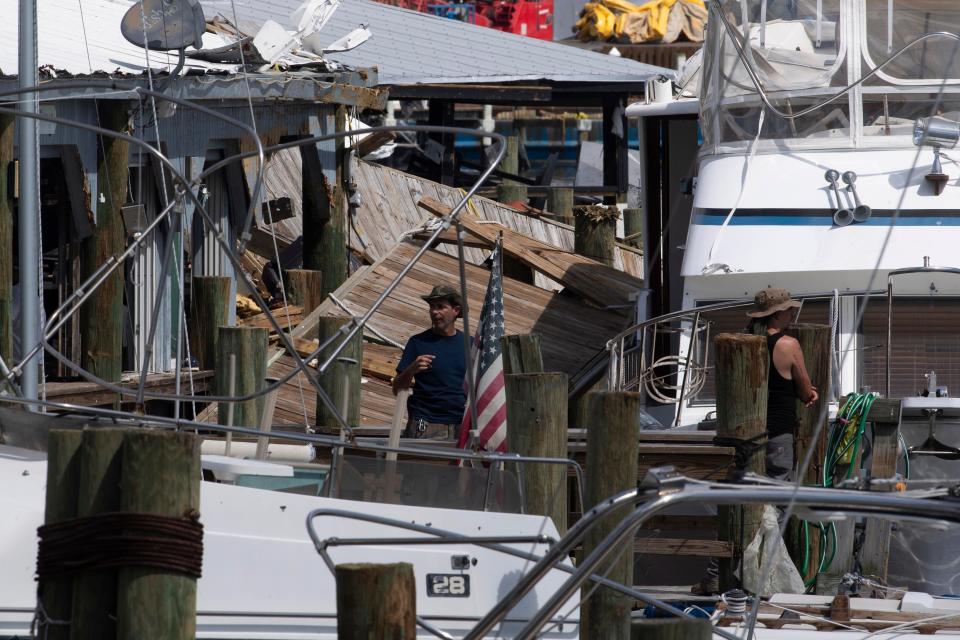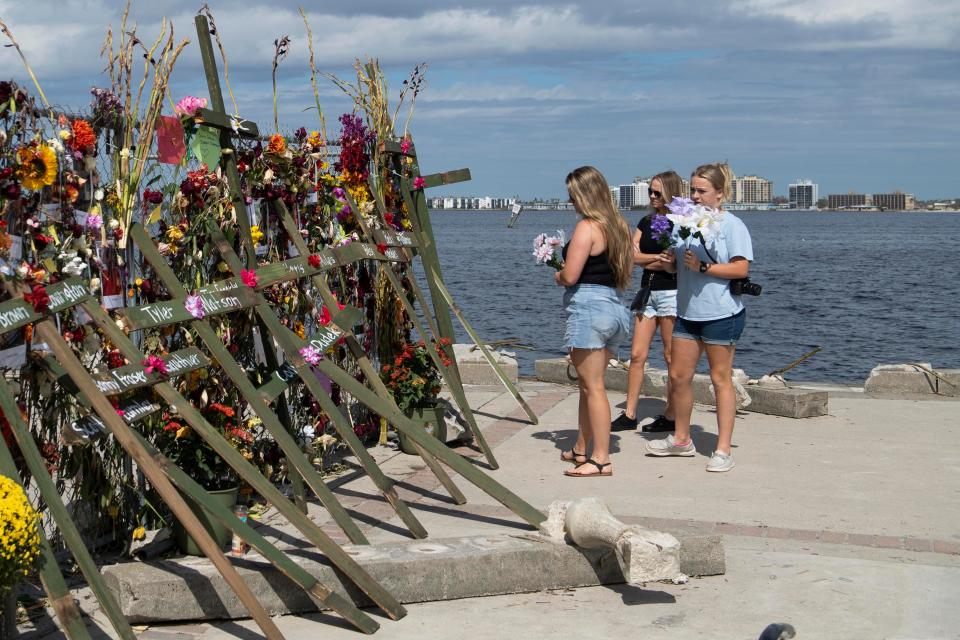Knox News' Saul Young photographed Hurricane Ian's emotional aftermath. Here's what he saw
Hurricane Ian made landfall in Florida on Sept. 28 and, less than one week later, seasoned Knox News photojournalist Saul Young went to document the aftermath − to share the stories of those who survived and paint a picture of the heartbreaking devastation.
Young left for Florida Oct. 3 and made the voyage home nine days later, stopping in Atlanta to rest and for a phone interview about his experience.
This interview has been edited for length and clarity.
How many natural disasters have you covered in the past?
Young: In recent memory, this would be my third one. The first one was about a week after the tornadoes leveled Mayfield, Kentucky, and that was … last December. And then I was in Eastern Kentucky about a week after the flooding of the small communities in that area. I did cover some of the aftermath of the Gatlinburg fires, but not as directly as I have these two disasters and, now, Hurricane Ian in Florida.
How did you prepare before going to Florida?
Young: The USA TODAY Network gave us a list and they basically told us, "Prepare to go into a place that has no electricity, no infrastructure, no access to internet." So in order to prepare, it basically means wherever we're going down there, we'll be camping, and we'll have to have everything with us including gasoline, food, supplies, clothing and all the things that go into living on your own with no help whatsoever.

What did you pack for the assignment? What did you wear?
Young: I expected to arrive in standing water. But by the time I arrived, which was approximately seven days after Hurricane Ian made landfall, most − if not all − of the water had already receded. I brought waders with me and efficient waders, fireproof clothing. I did not have to wear any of that. I still wore waterproof boots because it was extremely muddy, and there were nails and broken glass everywhere. So, I still needed to wear protective equipment.
I also packed bottled water, two gallons of water, 15 gallons of gasoline strapped to the top of my rental car, canned goods, a camp stove with fuel and spare clothing. What I wore was like work clothes − clothing that's lightweight, breathable. Stuff I'm not afraid to ruin or get dirty.
Like past natural disasters, I expected that at one point the President of the United States would make a visit, and there's a possibility that I would have to take photographs of that visit. I packed a pair of dress pants and a button-down shirt and, sure enough, my first assignment was to photograph the president on (Oct. 5).
When did you arrive, and what was your immediate reaction?
Young: I left Knoxville on Monday, Oct. 3, and I arrived Tuesday evening. Monday evening, I slept in my car in a Waffle House parking lot. And then Tuesday evening, I slept in my car in a hotel parking lot.
Hurricane damage is really expansive. As I'm driving through southwest Florida, you start seeing signs of damage but nothing super major, like bent trees, maybe some business canopies torn down. But you don't see a lot of damage at first. And as I'm driving further southwest towards Fort Myers Beach − by the time I got there, it had gone from bent trees to full-out wreckage of everything.

I saw yachts on roads. I saw what I think were buildings that were nothing but rubble. But I will say the one thing that always amazed me - this is seven days after the hurricane hit - by the time I reached southwest Florida in the Fort Myers area, all the roads were, for the most part, clear because the first thing they do after any natural disaster is clear the roads for all the emergency equipment.
I am ... just absolutely stunned that what you often feel as a sense of permanence in cities, buildings, access to goods − just stunned that everything could be so easily razed by wind and water. I mean, by no means is a hurricane small. It's more than just wind and water.
And then my next thought is, "How, as a journalist, do I navigate this environment?" I'm here to document the damage, but that's only a small part of my job. There are many people in these organizations that are here to document damage. I'm here to document the aftermath of the damage. What has this done to the community? How is the community responding to it? And more often than not, all these communities who have suffered a natural disaster always seem to just come together in this cohesive unit of helping strangers and neighbors.
Were there any moments where the line between your role as a photojournalist and role as a human were blurred?
Young: Not often. But on my second day there, I was escorting a homeowner to their home, and it would have been her first time back to her home in seven days since the hurricane.
She was finally allowed back to her home, so I escorted her to her house, and all she wanted to do is just salvage what keepsakes she could. That included family photographs, a blanket or two. I offered to help carry some of the items for her, and I did out of the house. I took one or two photographs of her while she was there, and then I spent the rest of my time just helping her carry some of her things out of the house.
What was the most striking image you took?
Young: Everything I photographed for Hurricane Ian I see as a body of work, and not a single photograph is adequate enough to (capture) the aftermath of Hurricane Ian. A hundred photographs, 1,000 photographs are not enough to accurately show how brutal that storm was. I will say my favorite photographs were not of Hurricane Ian but the people who showed up to help those after the hurricane on their own time.

Those are my favorite stories − the non-federal agency aid from just average individuals and regular people who felt the need to go down there. There was a guy who brought three smokers, and I can't remember his name right now. He drove down from Iowa with three barbecue smokers set up in a Big Lots parking lot and just cooked meals for anyone and everyone. It didn't matter whether you were impacted by the hurricane or not − or if you were down there working. If you showed up in line for food, you got a plate of ribs.
How has this experience shaped and affected you?
Young: It has taught me that what my problems are in life pale in comparison to what people endure after a natural disaster. I've never had to experience anything on a level of devastation where you lose everything. People who live down there lived in boats, and their boats are gone. They're sunk along with everything they had. People walk out of there with just a handful of items in their arms.

How does this assignment compare to your 23 years of working at Knox News?
Young: Hurricane Ian is probably the most difficult assignment emotionally. It really has been. I have photographed everything: parties, events, birthdays, births, deaths, tragedies. But Hurricane Ian was emotionally the most difficult because I can't wrap my mind around the amount of devastation. I always have to build a mental wall to prevent myself from just breaking down from seeing all that damage. I've been thinking about it now since I've left. It's hit me a little hard because I get to go home today and sleep in my bed, hug my spouse and see my dogs. And there are people in Florida that can't do that.
Is there anything else you’d like to add?
Young: The big takeaway for me is just the ability of people, and this is something I saw after Kentucky and witnessing what people did after after the Gatlinburg wildfires. It's a common theme throughout all natural disasters that it brings community together stronger than ever. It's a shame that it takes a natural disaster to do that.
Email:keenan.thomas@knoxnews.com| Support strong local journalism, unlock premium perks at knoxnews.com/subscribe.
This article originally appeared on Knoxville News Sentinel: Hurricane Ian: Photojournalist shares stories of Florida coverage

